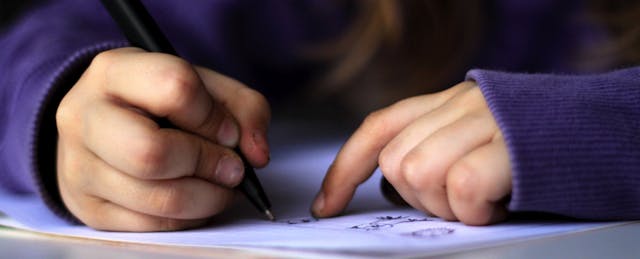To many educators, personalizing reading and writing instruction sounds like an impossible and, oftentimes, lofty dream. But with our culture’s ever-increasing dependency on text, especially as we transition to digital media, online reading, and electronic communication, it’s more important than ever to help our children become fluent readers and writers.
Reading and Writing Workshop (or RWW) has taken education by storm over the past twenty years. While it offers a student-driven, personalized approach to literacy, the task of managing such complexity can be overwhelming for even the most experienced educators. Fortunately, tech tools and applications are here to help.
Not to worry--no one’s suggesting that technology do the teaching. Instead, leveraging technology can remove some of the mundane tasks associated with Reading and Writing Workshop, helping you and your students work smarter… not necessarily harder. Check out these two tips for implementing Reading and Writing Workshops with your kiddos.
Choose a Versatile App to Promote Your Students’ Thinking
It’s really easy to fall into a trap when looking for apps. So many apps are content-specific, but that’s not what you need for an effective Reading and Writing Workshop. Instead, what you need are apps that promote thinking, not content. These three apps will be sure to give you a lot of “bang for your buck.”
iCardSort: One of the best ways to help kids construct their own understanding of content is through sorting. By sorting, students are able to identify examples and non-examples of items within categories like spelling patterns, parts of speech, or other groups of related information, building their own context for the content. iCardSort, an app that creates movable electronic cards, allows students to sift through and sort information. Most simply, it can be used for categorizing, but the possibilities are endless! It can also be used for building sentences, research, or even learning how to write paragraphs.

Popplet: Reading and writing are non-linear art forms, and the tools we put in front of students should facilitate this creative process. Confining children to prescriptive graphic organizers can kill a love of reading and the freedom that accompanies spontaneous thought. Using concept mapping tools like Popplet allows students to document their journey in an infinite visuospatial sketchpad of thought, that truly reveals the nuanced complexity and interconnectedness of being literate.
Educreations: The younger children are, the more difficult it is for them to express their ideas in writing. By providing students with interactive whiteboard and recording tools like Educreations, students can document thinking simply by speaking. They can import rubrics, texts, and writing samples to create videos that focus on process, not product. As a part of my reading assessments, I’ve asked students to read the text aloud in Educreations, annotating, highlighting, and thinking aloud as they go. It’s given me fantastic insights into thought patterns and the complex nature of individual student thinking while reading. Here’s an example from one of my fifth-grade students from last year. In the video, she shows her understanding of inflected endings (-ing, -ed, -s/-es) in a way that is authentic, comfortable, and creative!
Leverage the Power of Google Tools
For some, writing in a notebook can be scary. There’s nothing worse than committing a great deal of effort to writing the best sentence you possibly can, only to have to go back and erase it. Using online tools can alleviate this headache, especially for our most struggling writers. Of course, Google Docs or Pages can help with this, but Google Tools has so much more to offer than just word processing!
One of the most powerful tools for RWW is the Google Form. In just minutes, you can create data-collection documents for almost anything. When teaching the research process, I’d often pose open-ended, content-specific questions, such as “How was the United States built?” leading kids on a quest to build collective knowledge. All of their responses populated a spreadsheet, upon which we were able to find significant events and model the process of synthesizing research as a class.
Moreover, Google Forms are invaluable for documentation, an underpinning of RWW and a student-driven environment. I’ve created Google Forms for independent reading and writing conferences, students submitting “help” tickets for when they need assistance, and even for them to collect their own thoughts about texts they’re reading. By storing all of these forms, sheets, and docs in Google Drive, it curates a student-driven portfolio, keeps you organized, and helps you to work smarter in the dynamic and spontaneous classroom ecosystem you’ve built with your students.
What Will Literacy Look Like in 20 Years?
Technology has changed the face of literacy. Our students are learning how to operate in an information-rich environment earlier than we would have ever expected. While it seems impossible, building a student-driven Reading and Writing Workshop is the wave of the future. In 20 years, these processes, supported by tools like these, will be standard, and helping our kids learn to think freely with the support of these tools is where we need to start. So give them a whirl, take a risk, and get yourself on the path to working smarter in your classroom.


